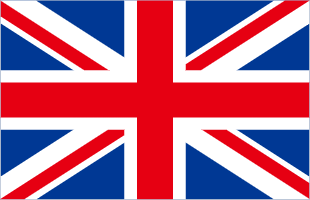IP68 and IPX7 are two of the most common water resistance ratings for electronic devices and gear. Both mean different things and in this guide, we’re going to give you a complete lowdown of the IP68/IPX7 difference and capabilities. We’ll begin with a quick comparison of the two IP ratings.
IP68 vs. IPX7: What are the Key Differences?
The International Electrotechnical Commission (IEC) gives out IP ratings to device enclosures based on how protected they are against solids like dust and moisture like that from freshwater submersion or rain. There are two numbers following the “IP” part in an IP rating that signifies the protection against solids and liquids, respectively.
The dust resistance ranges from 0 to 6 and the liquid resistance ranges from 0 to 8. So, here’s what it means for IP68 and IPX7:
• IP68: Indicates that a device is dust-tight (6) and can withstand continuous immersion in water beyond 1 meter. The specific depth and duration are determined by the manufacturer.
• IPX7: The "X" in IPX7 means there's no specific rating for dust protection. The device can withstand immersion in water up to 1 meter for a specified duration (usually 30 minutes).
Note that X does not mean 0 protection. The IP rating system has been popularized over the last decade or so. As such, many devices have not tested the dust resistance or can’t, for one reason or another. This does not mean that the device is not weather-proof. It could also mean that the test is pending.
Water Resistance Between IP68 and IPX7
Now, let’s specifically talk about the water resistance of the two types of device enclosures. The highest water resistance a device can offer is “8” as per the IEC. IP68 has 8 as its water resistance level, which means this is higher than IPX7’s rating, which is 7.
As per the official guide, the second numeral for water means:
• Protected against the effects of temporary immersion in water at 7.
• Protected against the effects of continuous immersion in water at 8.
What this means is that an enclosure with 7 as its second numeral in the IP rating can go up to 1 meter submerged in water for 30 minutes or less. An enclosure with an 8 in its second numeral can go deeper and/or longer than that. The exact depth and length of time are determined after testing and can differ from one device to another from a manufacturer.

The difference between IPX7 and IP68, as far as water resistance is concerned, is pretty similar. If you’re not going to be submerging your device in water for longer periods of time, you should be good to go with either. Both offer well-rounded protection against splashes, spills, and even accidental drops in water.
Note that all water resistances are calculated based on fresh water’s effect on the device enclosure. Saltwater and other types of liquids can do more damage even within the limits of the device, and it’s safest to keep these away from your device at all times.
How to Choose?
Now, let’s come to the meat of the discussion – how do you choose between an IPX7 and an IP68 device? Assuming everything else is the same, here are the considerations to keep in mind to make a more informed buying decision:
• If you need weather-proofing and dust protection, then IP68’s “6” rating for solid protection is a must. On the other hand, the IPX7 device has not been tested, but at the most, it can also go only as high as 6, which the IP68 device already is.
• If you need more water resistance, then the 8 rating of the IP68 device is a better bet for you than the 7 rating of the IPX7 device.
• If you’re not looking for dust resistance and slightly better water resistance, either of the devices will perform well.
Overall, it’s safe to say that the IP68 rating is objectively better than the IPX7 rating. It has higher water resistance and confirmed complete dust protection and weather-proofing. As such, it’s almost always the better device. But your use case and the pricing of the devices will determine which is the better option for you.
IP68 is ideal for situations where your gear might be exposed to water for an extended period, such as underwater photography or activities involving continuous submersion. This is commonly found in high-end smartphones, smartwatches, and rugged outdoor equipment such as Oukitel’s high-performance rugged smartphones.
On the other hand, IPX7 is suitable for devices that may encounter occasional splashes or brief submersion. These devices are good for everyday scenarios like accidental spills or using your gear in light rain.
So, now you have a clearer idea of the whole IP68/IPX7 debate.
Discover Oukitel's High-Performance Devices with IP68 Protection

















